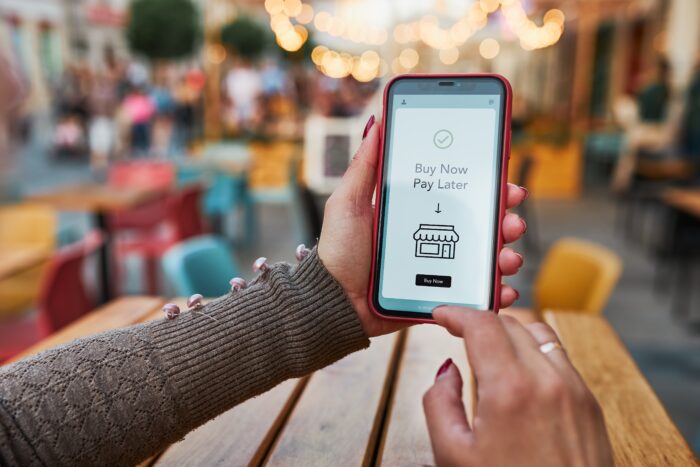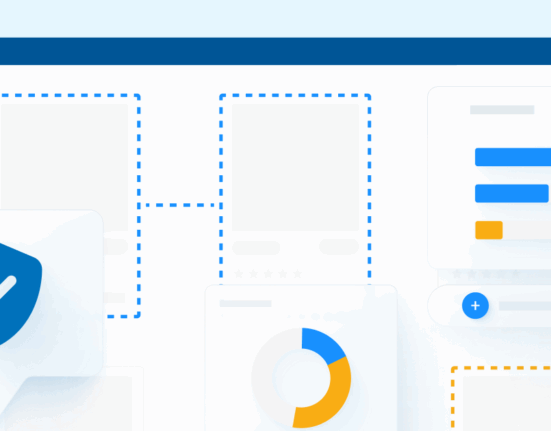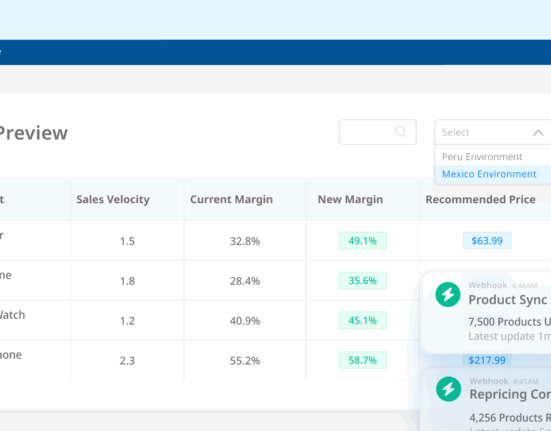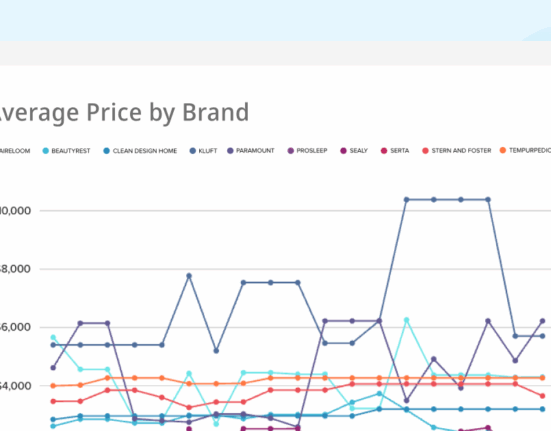Picture this: a shopper is doing some browsing online and adds something a little pricey to their cart. It’s an item that they’d really like to have, but it’s not quite a necessity. They get this close to completing their purchase, but there’s something stopping them—it’s just too big of an expense right now.
This back and forth continues until maybe eventually they buy it, or maybe it ends with every online retailer’s biggest fear—they abandon their cart.
But what if they didn’t have to pay full price for that item? At least, not all at once.
That’s where services like Buy Now, Pay Later (BNPL) come in.
What Is Buy Now, Pay Later?
BNPL is a payment system that gives the customer a short-term loan, allowing them to purchase the item while only paying for an initial portion of the full price out of pocket. Then the rest of the payments will be made in installments over time.
BNPL is also often referred to as “Pay in Four” as these types of services usually involve a total of four equal payments that add up to the total amount. These can be biweekly or monthly payments, depending on the service. Klarna specifically is known for offering a “pay in 30 days” option, which allows shoppers to try out the item for a period before they need to pay for it.
When the shopper agrees to the BNPL payment plan, they have to provide their debit or credit card information and the remaining payments will be billed automatically until the full item amount, plus any accrued fees, is paid off.

How Does Buy Now, Pay Later Work?
There are several popular BNPL services currently available to shoppers, such as Affirm, Afterpay, and Klarna. Each of them works similarly but do have their own distinctions.
Usually the process goes like this:
- When shoppers go to check out online, they’ll see an option to pay in installments from a BNPL or pay-in-four provider.
- If they choose this option, then they’ll have to fill out a short application that will ask for their name, contact information, banking details, and possibly their social security number. Using this information, the provider will run a soft credit check. This will not affect their credit score. The provider will provide an approval or denial almost immediately. These types of services are known to approve BNPL to shoppers even if they have a lower credit score.
- The shopper will be offered a payment plan, usually pay-in-four, that requires either monthly or bi-weekly payments and the first payment immediately. For example, if the purchase comes out to $400, they will pay $100 now and then three more payments of $100. Pay-in-four plans generally do not charge interest and the payments are pulled directly from the customer’s bank, so there’s no fear of incurring late fees.
Retailers who offer BNPL services at checkout pay the providers to use their service. Usually, the provider will hold a small percentage of each purchase and give the rest of the amount owed to the retailer. With this arrangement, the retailer will lose a small amount from each sale but will likely get more sales over time. The ability to pay in installments gives shoppers more of an opportunity to make larger purchases.
How Buy Now, Pay Later Can Benefit Your Customers
Previously, shoppers really only had a couple of limited purchasing options. They could either pay in cash, put it on credit cards, or use the layaway services that some retailers provide.
BNPL opens a lot of doors for those with lower expendable cash allowances. Paying $160 for a new pair of shoes can be completely unfeasible for a lot of people. But paying $40 every couple of weeks? Now that’s doable.
It’s easy to see what the pros are for shoppers:
- Increased spending power
- Payment flexibility
- Convenience
- Higher spending and budgeting control
- Simple and transparent payment plans
A better shopping experience for your customers means more sales won for your business. According to Afterpay, retailers experience an 11 percent increase in profit margins when compared to pre-Afterpay sales.
Klarna boasts similar benefits, reporting a 41 percent increase in average order value and a 30 percent increase in conversion rates.

Potential Disadvantages of Buy Now, Pay Later
As with any new service, there are some potential risks to consider before you move forward with implementing BNPL services.
High Provider Fees
As stated previously, retailers who choose to offer a BNPL feature to their shoppers will lose a portion of each purchase to the service provider. This fee can be as high as 8 percent, which is higher than traditional options like debit or credit cards.
On top of this, if the shopper chooses to return an item that they used a BNPL plan to pay for, the retailer does not have that provider fee returned to them. This amounts to an overall loss for each item returned—that can really add up!
Integration Issues
Depending on the provider you choose, it might be difficult to integrate and maintain this new payment option into your online purchasing platform. Adding a new feature means one more thing that could go wrong or be potentially difficult to use for the shopper.
Prays on Low-Income Shoppers
One common ethical dilemma for those who offer BNPL payment plans is that you are essentially encouraging shoppers to spend money they don’t have. BNPL services appeal particularly to those who don’t have a lot of expendable income, and this can come across as praying upon low-income shoppers.
Because service providers only perform soft credit checks when approving loans, there is a risk that the shopper will not be able to afford future payments. This can lead to overdraft fees and other potential issues for the customer.
As a retailer, it’s important that you keep a close eye on Buy Now, Buy Later trends so you can stay informed and make the best decisions for your business.
Is Buy Now, Pay Later the Right Move for Your Business?
It’s easy to see why consumers are interested in BNPL options, but is implementing them the right choice for you?
Well, BNPL can lead to increased sales, higher conversion rates, and even improve the customer shopping experience. It’s up to you if you want to incur the potential risks. For some retailers, the provider fees and integration costs are worth the benefits. For others, traditional payment options like debit and credit cards are all they need.
As a retailer, it’s important that you keep a close eye on Buy Now, Buy Later trends so you can stay informed and make the best decisions for your business.
Visit Wiser.com today to learn more about price management.









